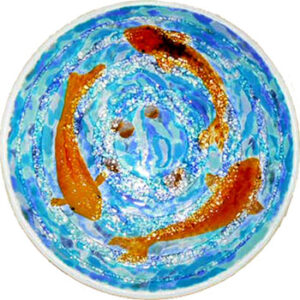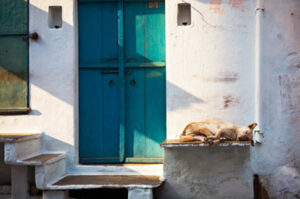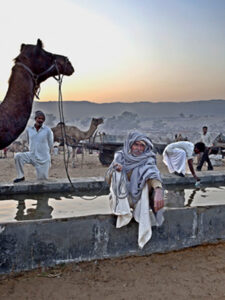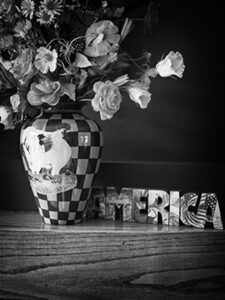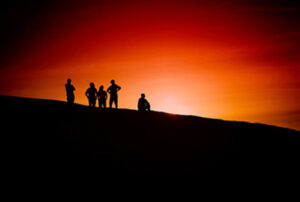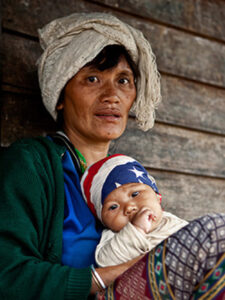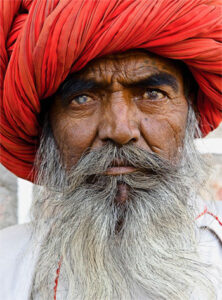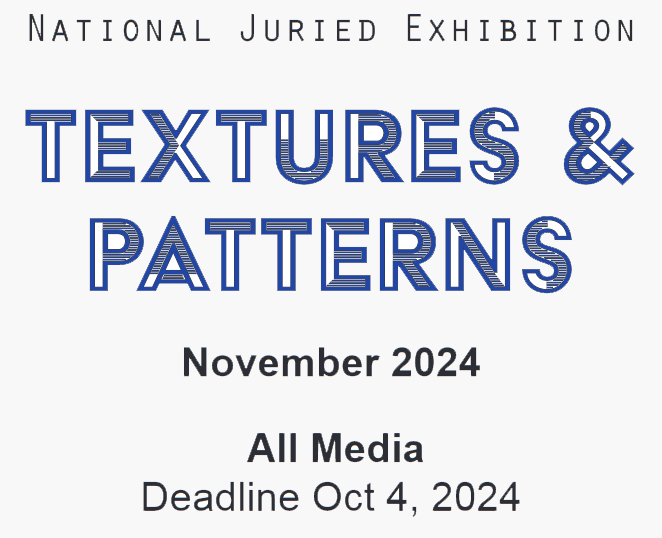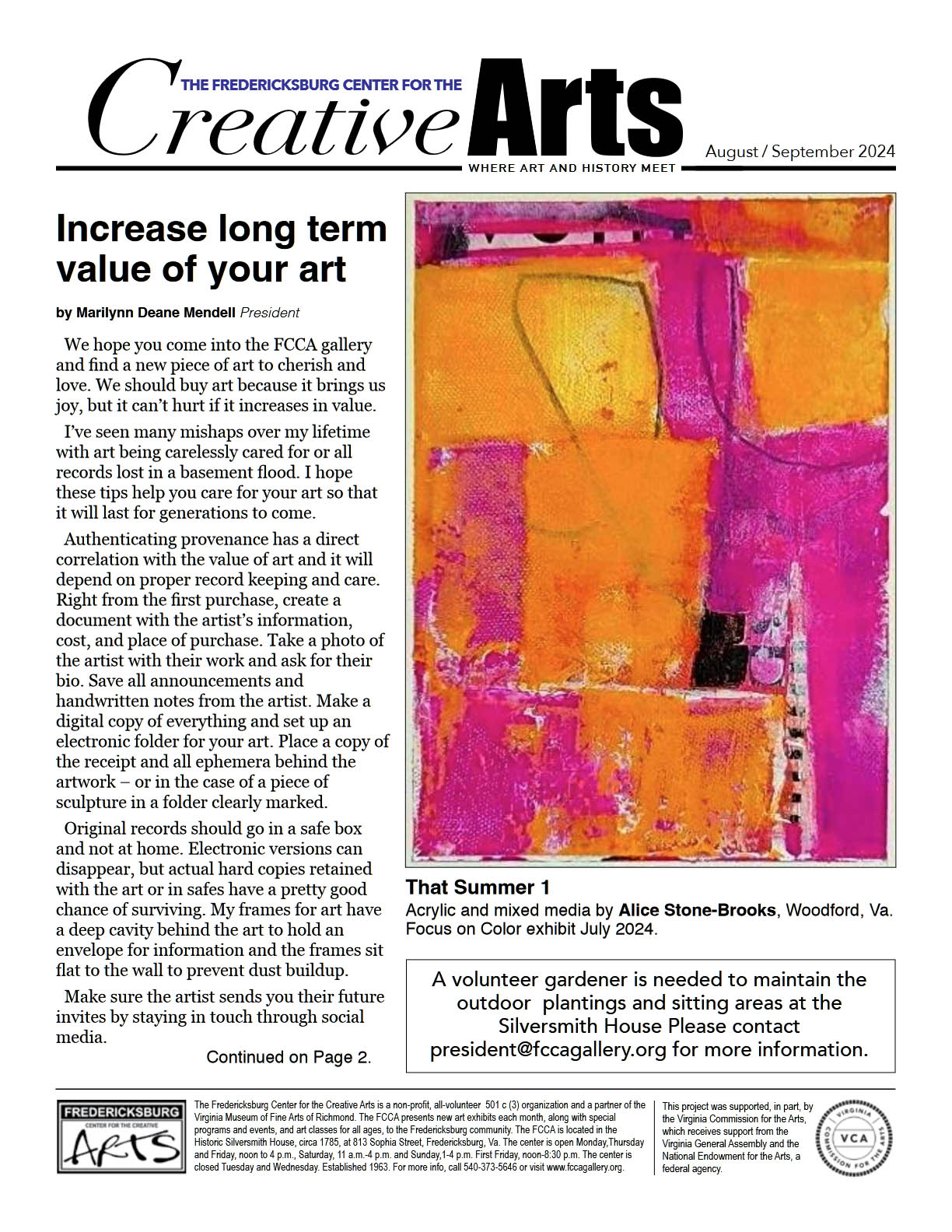Like a Box of Crayons
The Fredericksburg Center for the Creative Arts presents a special two-person, guest artists exhibit by Marti Belcher and Jeanne Marie Tanks, in the Frederick Gallery in August.
In 1995 'Forrest Gump' won the Oscar for Best Picture of the Year. Tom Hanks took home the Best Actor Award for his poignant portrayal of Forrest Gump. All of us can still hear Tom Hanks saying, "Life is like a box of chocolates. You never know what you're gonna get."
Like Forrest's box of chocolates, a box crayons also has endless possibilities. As little girls, Marti Belcher and Jeanne Tanks both loved their box of 48 (crayons): all the colors of the rainbow and more; so many potential pleasures, only limited by one's imagination. Out of this love of color in all of its forms, emerge two artists whose work feels like one of Crayola's finest moments.
Jeanne grew up in the country in Michigan; Marti grew up in the country in New York State. They both gave birth to two daughters. They both married military officers. Those are shared happenings; the rest of their lives went in very different directions, as did their art and creativity.
Jeanne Tanks paints with glass. Most of us don't even know what that means. Here is a tad of information about the process. One of the most difficult and challenging art mediums to master is the process of painting (fusing) glass onto glass to create a realistic picture. To create such a painting requires in-depth knowledge of the properties of glass, the color shifts that often occur when it is heated, its coefficient of expansion and the imperative to use only compatible materials, and the effects of time, temperature, and annealing requirements that are related to the mass of the project and colors of glass used. Jeanne's imagination creates beauty and permanently captures her vision at temperatures above 1000 degrees Fahrenheit. Her work must be seen to be appreciated by ordinary mortals.
Artist Statement
Much of my love of the visual and performing arts came about as a result of being legally blind for the first 14-years of life. Once I was able to see God's world clearly, I was imbued with a sense of awe I have never gotten over. We really do live on a beautiful planet. I try to capture that beauty and sense of God's love for us in my art.
I am an experimenter at heart. I love pushing to the limit a medium, substrate, learning by experimentation, mastering new ways of producing my art work. Consequently, over the 50-odd years that I have enjoyed sight, I have explored and worked in many art mediums, some of which are: oil, encaustic, pastel, silk-dye and watercolor painting, photography, printmaking, textiles, ceramics, sculpting in stone, metal, paper, and hot glass, which is now my major focus of artistic endeavor. I have been privileged to study art in many areas of the world, traveling or living in nearly all of the 50-states and 17-foreign countries. I have taken art classes through out Europe and the USA, from many sources, to include five colleges or universities, plus specialized sources of instruction such as at Corning, NY and Penland, NC. I also have a bachelor's degree in studio art from the University of Mary Washington.
For the last 18-years, I have increasingly focused my artistic efforts on mastering the skills needed to be a warm glass artist. Warm glass is typically worked in a kiln at temperatures between 1200-1700 degrees Fahrenheit, although action/reaction can be achieved at higher and slightly lower temperatures. Using this source of heat, glass may be cast with a number of different techniques, fused, and/or manipulated into a slumped or draped form. Kiln-formed glass is a very demanding process that requires much study, experimentation, and practice to master. Included in this exhibit are some "painting with glass" art pieces, which represent one of the newest fields in kiln-fused glass art, that I introduced and others are attempting. Some glass painting techniques require multiple layers of glass, each of which must be fused before applying the next layer. A typical fusing cycle usually requires 24-hours (or more) to heat, fuse, anneal, and cool the glass to room temperatures appropriately and safely (depending on the volume and mass of the piece). The resulting piece of artwork is permanently fused into a single piece of glass.
My attempts have been to produce 'fine art' quality in composition and execution in my warm glasswork, not the traditional approach to glass with transmitted light as part of the medium, but glass painting as a framed wall-hung painting, thus only refracted and reflected light.
In the FCCA Exhibit, Like a Box of Crayons, I suspended my normal artistic style of producing representational glass paintings, and adopted a technique that harkens back to the Fifteenth and Sixteenth Centuries of using symbolism as was used in the works of artists such as Martin Schongauer, Hieronymus Bosch, Matthias Grunewald, and Albrecht Durer (and as in more recent years, that of Albina Elskus), all of which used artistically stylized objects to convey a story with moral, social, and spiritual lessons.
Each piece of artwork prepared for this exhibit was chosen because of its message to the glory of God's Love, Direction, and Creation of the beings of this world. He loves you.
I hope you enjoy the art I have selected for this show.
Marti Belcher was missing creativity in her life. So she left the employ of the Federal Government when she turned fifty-five years old. Curiosity led her to her first loves, learning and the visual arts: art history, architecture,interior and graphic design. To receive a degree in Graphic Arts,photography was a requirement. That meant black and white film in the darkroom. It was an inauspicious beginning for a woman who did not particularly like cameras.
Marti often goes on a junket to Asia, particularly India and Myanmar. It is a long way from a dairy farm in New York State but the dairy farm was a good place for Marti to start her journey. She photographs ordinary people in commonplace situations on the other side of earth, rich in color, form and sensibility. Marti's portrait work has hung in galleries around the country, drawing rave reviews: fascinating, handsome, turbanned men of Rajasthan, tattooed, exotic Naga women and beguiling children with magic in their eyes.
Artist Statement
Life is a journey, a continuum of everyday events and ordinary people, all of which make for an extraordinary lifetime of experiences.
The commonplaceness of the people, the situations and the objects found along my journey, become the elements that evoke calm, bring comfort, and furnish a sense of connectedness for me.
I am an adventurer, a lover of color, culture and the bewitching. My path has taken me to Asia, particularly India and Myanmar. It is a long way from a dairy farm in New York State but the dairy farm was a good place to start the journey. I learned to appreciate the every day events and the emotions that make us human. Today I photograph ordinary people and ordinary situations on the other side of earth; their lives are much like the life lived on the dairy farm when I was a child.
I am drawn to the surface beauty but the beauty within ultimately captivates and transports me. Much of my work is about the environment that people live in. The conditions aid in understanding of the individuals I choose to photograph. Through my work I explore the spectrum of emotions: joy, passion, fear, anxiety, tenderness, anger, aloofness, etc. I allow myself to become involved with the individuals I photograph. Many times my emotions are transmitted to the images. These moments can be intense, maybe disturbing and always powerful. It is personal and it matters to me.
A FEW WORDS ABOUT ME
I was born on my grandfather's dairy farm in upstate New York. My parents, Eleanor and Percy, made TV antennas for a living. The tranquility of agrarian life, the nitty-gritty of the factory environment and now, the speed and sterility of the age of technology, have each provided me with an uncommon vantage point from which to observe and record the human condition.
Curious by nature, I remain always a student. In 1981, I moved to Virginia to complete my education at Georgetown University. My time at Georgetown afforded me an opportunity to question my basic beliefs, examine new philosophies and to grow into a fuller human being.
After working for many years in the federal government, I went back to school to study interior design, art history and graphic design. In 2003, this led me to the study of photography. From the moment I picked up a camera, I knew that I had found my creative outlet.

